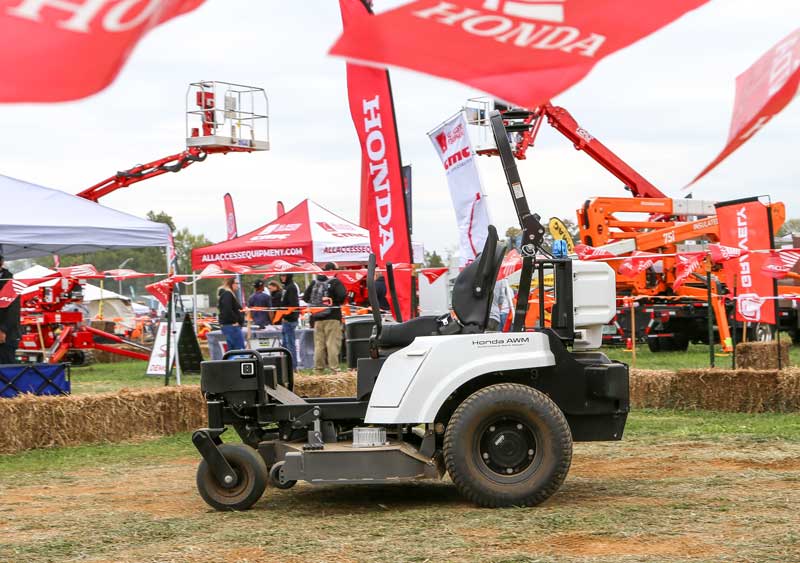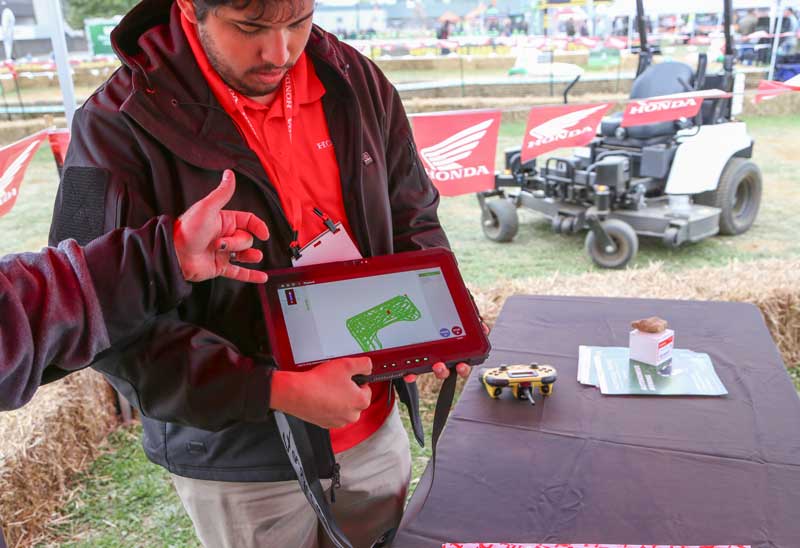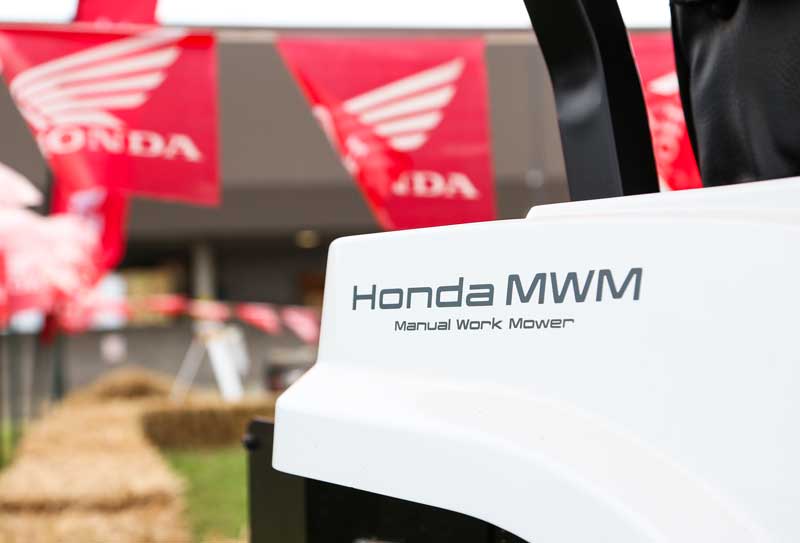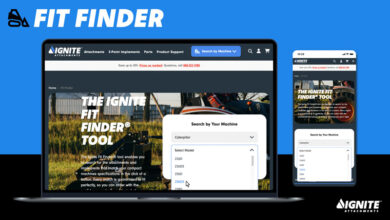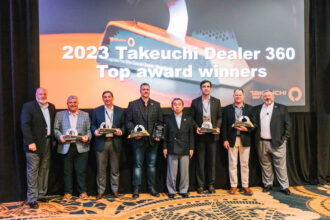Honda debuts Autonomous Mower to power-equipment pros
Under a simple display tent surrounded by red Honda-emblazoned string pennant flags, a black-and-white Honda Autonomous Work Mower (AWM) piloted itself over the grass with little fanfare. This is the company’s first battery-powered electric zero-turn riding (ZTR) mower and is in prototype stage.
“This Honda Autonomous Work Mower is already in its third generation,” said Jason VanBuren, Systems Engineering Manager at American Honda Motor Co., Inc., when we visited the outdoor display. “This is a prototype, and we have worked closely with landscapers to get the vehicle to this stage.”
“For us, this vehicle is focused on safety and reliability,” said VanBuren when we asked about Honda’s goals. “When people at the show come here and see this mower, they know it’s a Honda and they know they can count on it being safe and reliable. All the mowers here stripe and cut,” he said, “but this is the only Honda.” Another mower in the same display area showed an “MWM” logo for Manual Work Mower.
Users can operate the prototype Honda AWM in manual or autonomous mode. When operated manually, the vehicle learns the mowing routes and patterns set by the operator. In autonomous operation, the AWM reproduces these routes and patterns.
Teaching or Playback Mode
In the mower’s Teaching mode, the operator sets up autonomous operation manually by maneuvering the vehicle to create a mowing route map using an RTK-based satellite navigation system. The operator can create different mowing route maps customized for multiple job sites, which they then save to a secure cloud server. After completing the Teaching setup, the operator launches the AWM’s autonomous operation in Playback mode. With the AWM in the starting position, the operator downloads the specified mowing route map using a tablet or smartphone.
The Honda AWM uses a unique traction control system to maintain straight tracking on hills and over rough terrain. Its differential two-motor traction control suppresses tire slip to achieve stable straight-line and turning performance even on slopes and rough roads. Built-in safety features include omnidirectional sensing as well as radar and LiDAR sensors for obstacle detection. It also can sense terrain variations and stop when encountering obstacles.
With vehicle speed-linked blade motor control, the AWM automatically reduces blade rotation at low speeds and low loads to reduce power consumption. At high loads, the AWM automatically reduces its speed to prevent grass clogging and uncut grass.
Even with these features, VanBuren said that battery development is a big focus of this product’s development. He was unable to share any information about the product’s batteries.
Honda Report
In its recently released global “Honda Report,” the company highlights electrification of its power products business. “Expanding beyond engine-centric offerings, our present power products business is set to encompass portable batteries and product electrification,” said Honda in this report. “Against the backdrop of increasing environmental regulations, there is a growing shift towards electrification in the domain of small-scale construction equipment and gardening… Conversely, the demand for internal combustion engine (ICE) products persists, fueled by their attributes such as ‘high power output and extended operation hours’ and their ‘cost-effectiveness,’ well-suited to specific applications.”
Honda Engines
Inside the Equip Expo display areas, we spoke with David Bush, Assistant Manager of Honda’s Experiential Group. Bush said he understood when we reported the frustration we hear from Honda dealers regarding the discontinuation of walk-behind mowers as well as the Honda GC engine.
While he acknowledged that Honda is done with walk-behind mowers, he said that the manufacturer is always looking at opportunities to develop products for the power equipment market. “We are going to remain focused on our GX engine,” said Bush, “and the new eGX engine, which we showed here last year.”
In the Honda Report, the manufacturer says, “we will support the electrification of finished equipment manufacturers through the sale and installation assistance of the electric power unit eGX.

